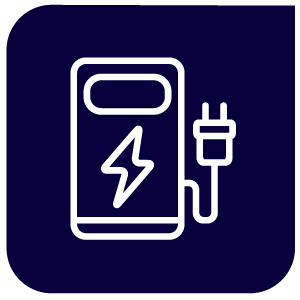
It was March 2019. The sun was shining, the average person had never heard of the difference between a surgical and N95 mask (or FFP-2 masks, as we call them in Germany), and I was working in a regular business office like most professional workers.
“We need to get you your own car,” a message on my phone read. It was my significant other, who was going to start working from home three days a week, and whose car I would be driving to work on those days. Because we live outside a city, having only one car available is a big inconvenience. Thus, I needed to find a new car.
To EV or not to EV?
Yes, that was my question. So, what exactly was I looking for in a new car? It had to reliably and economically get me to the office and back on weekdays—and I’d need it to run errands and buy groceries on the weekends.
That’s it. No long holiday trips without a speed limit on the Autobahn, no big IKEA hauls. Those trips would be covered by the “Kombi,” the German word for an estate car. Sounds like the ideal scenario for an EV, right?
Unfortunately, an EV just wasn’t a viable option for me in 2019, and to the extent of my knowledge, it still isn’t a great option for me in 2023. But maybe it will be by 2035 (the year when the EU will mandate zero CO2 emissions for all new vehicles).
The price is (not yet) right
Like Bethany Allee says, EVs are part of a still-maturing industry, so prices will hopefully decrease over time. We’ve even seen EV prices dropping on numerous models recently, so there’s hope.
However, the price of a new EV was and still is a bit out of my comfort zone. The secondhand market for EVs was practically non-existent in Germany before the pandemic, and according to the Technical University of Munich, an EV’s battery longevity is influenced by driver behavior. So, I would think twice before risking paying for the “sins” of a previous owner.
Beyond the cost, my other primary concern about EVs is how and where to charge the battery.
Charging challenges at home
For me and the rest of the 58% of households in Germany that don’t own the place they live in, home-based EV charging is not likely an option. Wall boxes are no longer being subsidized, and the cost to connect to and disconnect from the building’s electrical network is in most cases yours and irretrievable. And, depending on each building’s infrastructure, you might not be able to take your wall box and install it in your next residence.
Charging challenges with public infrastructure
Although there are significantly more charging points than there were in 2019—thanks in part to ambitious plans from BP and TotalEnergies for investing in Germany’s charging infrastructure, and it will only get better after the EU’s mandate for more chargers—I still have concerns about public charging.
At the risk of sounding overly demanding, here are my primary issues:
- Transparency: How does an EV driver know how much it will cost them to charge? It seems like each provider has different prices that depend on location, membership, speed of charging, etc. That makes it difficult to get an apples-to-apples comparison. We still have a long way until we reach a point of transparency similar to that of fuel stations, where prices are advertised on large signs and any pricing changes are communicated in real time.
- Privacy and security: As a marketer with a background in law, I value the power of data and know the strict privacy rules loyalty program operators adhere to, but I’m also a proponent of providing a choice to the consumer. Today, when someone fills up their car with fuel, they have the choice of scanning their loyalty card and sharing their data (if what they receive is beneficial to them in return). Standalone EV charging stations often require an app with registration, which means sharing personal data is unavoidable. Paying with cash is out of the question for now—and I’d think twice before inserting my card and PIN for a cashless transaction in an unattended payment terminal in the middle of nowhere, unless it’s a brand that I know and trust to take endpoint protection seriously.
- Convenience: The nearest public charging station near my home is at a supermarket just over three kilometers away. Even if it were my preferred store brand, I would still only charge there on Saturdays while buying groceries. Charging on the weekdays would have to be near the office and very likely during my lunch break. Which brings me to my next point: destination charging.
Destination charging—can service stations keep up?
When I inevitably become an EV driver, the only way I can imagine myself spending time near my car for longer than the actual five minutes it takes to fill up—or the idle 15 minutes of doom-scrolling on Reddit next to a fast charger—is when I can hit two birds with one stone.
Until someone can figure out how to deliver real onsite convenience, destination charging will likely never become as popular as charging at home. So, is this the beginning of the end of the service station, our beloved “Tankstelle”? In my opinion, absolutely not. Most certainly, operators in Germany and beyond must re-evaluate their offering and selling proposition.
Many are doing so already. And while there are still many unanswered questions, service stations can offer the transparency, privacy/security, and convenience element that other charging locations might lack. These stations represent long-standing brands that consumers know and trust, they already have signs with automated updates for prices, and their convenient locations and operating hours can cater to audiences with busy lives and higher buying power.
From my point of view as a consumer, whether on a road trip or during a busy workday, whoever provides the best option to recharge both me and my vehicle will get my money. And, provided they reward me for it, they can even have (some of) my data.
Thoughts about the r-EV-olution
When it comes to combatting the impacts of climate change, focusing exclusively on tailpipe emissions and electrification is not a panacea. It might not be viable or even possible to electrify all transportation sectors, such as heavy-duty transportation, shipping, and aviation.
That’s why we need to examine the energy transition and net-zero goals from all angles and possible technologies, and also assess lifecycle emissions and sustainable development by leveraging existing infrastructure wherever possible. E-fuels seem promising as an additional avenue on our long and difficult path toward carbon neutrality.
For now, I’ll keep looking for more ways to reduce my carbon footprint, like I did when I chose my Japanese hybrid car. But it will probably be a few more years until an EV is part of that solution.
EV and Convenience

Learn more about EV and convenience with new resources in the EV Hub.







